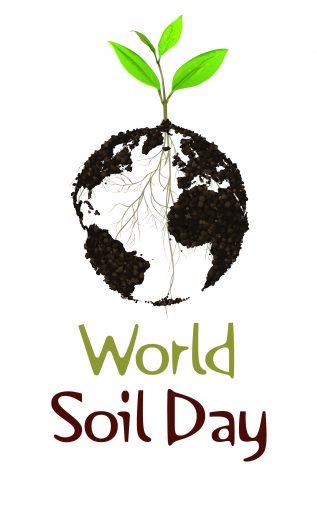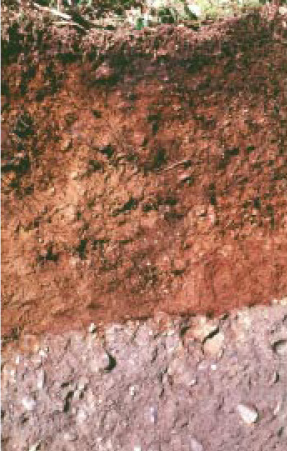 In 2013, the United Nations designated December 5 as World Soil Day. The date coincides with the birthday of the late King Rama IX of Thailand, a leading global advocate for the promotion of healthy soils and sustainable soil management. This World Soil Day, we’re digging into the history of soil science and looking ahead to see what the future holds for the oft-overlooked hero of our terrestrial ecosystem.
In 2013, the United Nations designated December 5 as World Soil Day. The date coincides with the birthday of the late King Rama IX of Thailand, a leading global advocate for the promotion of healthy soils and sustainable soil management. This World Soil Day, we’re digging into the history of soil science and looking ahead to see what the future holds for the oft-overlooked hero of our terrestrial ecosystem.
Why celebrate soils?
Simply put, soils are the foundation of nearly all ecosystems. They play critical roles in water and nutrient storage, provide habitat for an immense variety of organisms and are the medium in which vital environmental processes occur.
Soil – simple in concept if not in substance – is actually a combination of five varying elements:
- minerals (clay, silt or sand),
- organic matter (residues of plants, animals and microbes),
- living organisms (bacteria, fungi, nematodes and other microbes),
- gas (nitrogen, carbon dioxide and oxygen) and
- water

The various combinations of these elements give us the infinitely diverse range of soils and soil-life that we see throughout the world. In fact, Washington has an official state soil called Tokul, named after a creek and community in King County. Tokul is a productive and rich volcanic soil found only on the western side of the Cascade Mountains. Vital for the health of western Washington’s evergreen forests, this natural resource also stores and filters the water that Seattle and surrounding towns depend on.
What do our scientists love about soil?
We asked a few of our leading soil researchers to explain why soils matter.
Brittany Johnson, Environmental and Forest Sciences
“Soils provide a multitude of ecosystem services. They supply the building blocks for plant life including water, nutrients, physical support and protection from toxins. Soils drive the hydrologic cycle, influence greenhouse gas emissions and sequestration and change the energy balance of the Earth’s terrestrial surface.”
Robert Harrison, Environmental and Forest Sciences
“More carbon is found in soil than in the entire atmosphere and in all plant and animal life combined. Small changes in soil carbon would have a large impact on carbon emissions or uptake.”
Katharine Huntington, Earth and Space Sciences
“Soils record information about climate and plants in their chemistry. That means geologists can analyze the chemistry of ancient soils to learn about past surface temperatures, rainfall, atmospheric carbon dioxide levels and ecosystems.”
David Montgomery, Earth and Space Sciences
“Upwards of 97% of the food we rely on is dependent on the health of our soils. Healthy soil is vitally important for healthy crops, which in turn can increase the nutrients found in those crops. Regenerative practices can improve the soil and lead to healthier humans through a variety of mechanisms.”
What are the challenges to maintaining healthy soil?
Over one-third of all of Earth’s soil has been degraded since the advent of agriculture, and it can take over one thousand years to produce just two to three centimeters of productive soil in nature. The Food and Agriculture Organization of the United Nations highlight ten threats to healthy soils throughout the globe:
-
- soil erosion – largely due to water, wind and tilling
- organic carbon change – loss of carbon in the soil
- salinization and sodification – build-up of water-soluble salts
- nutrient imbalance – improper levels of micronutrients
- contamination – increases in heavy metals and pesticides
- soil sealing and land take – loss of surface-exposed soil
- soil acidification – improper use of chemical fertilizers increases soil pH
- compaction – livestock trampling and heavy mechanization of land management
- waterlogging – poor drainage systems and deforestation oversaturate soils
- loss of soil biodiversity – reductions in the diversity of living organisms within soils
In nearly all cases, the threat is created or made worse by human activities, but by utilizing effective soil resource management practices, it is possible to rejuvenate soil. Addressing these challenges require extensive research and collaboration, as well as individual behavior change throughout the community.
How can you help look after our soils?
- Participate in World Soil Day activities! The Global Soil Partnership has a wonderful infographic showing ways you can get involved, and a map of worldwide events that you can attend. Use #WorldSoilDay and #StopSoilErosion to join the global conversation.
- Become a soil advocate! Educate yourself on the issues (and their solutions), and share your newly found knowledge with those around you. Flex your civic muscles and ask your elected representatives to place a larger importance on soil protection and regeneration policies.
- Turn your research into action! Whether you have a home garden or you participate in a communal ‘P-Patch’, make an extra effort to consider the quality of your soil and work to improve it. The city of Seattle has a straightforward and informative guide to managing your soil quality.
- Donate to a soil-related nonprofit organization! There are many impactful nonprofit organizations that place an emphasis on preventing soil degradation; seek out one that is important to you, and contribute to their work.
And, if you’re a student here at University of Washington, you may want to check out the soil-related classes and resources in the School of Environmental and Forest Sciences, Department of Earth and Space Sciences, Civil and Environmental Engineering, and the UW Botanic Gardens!

